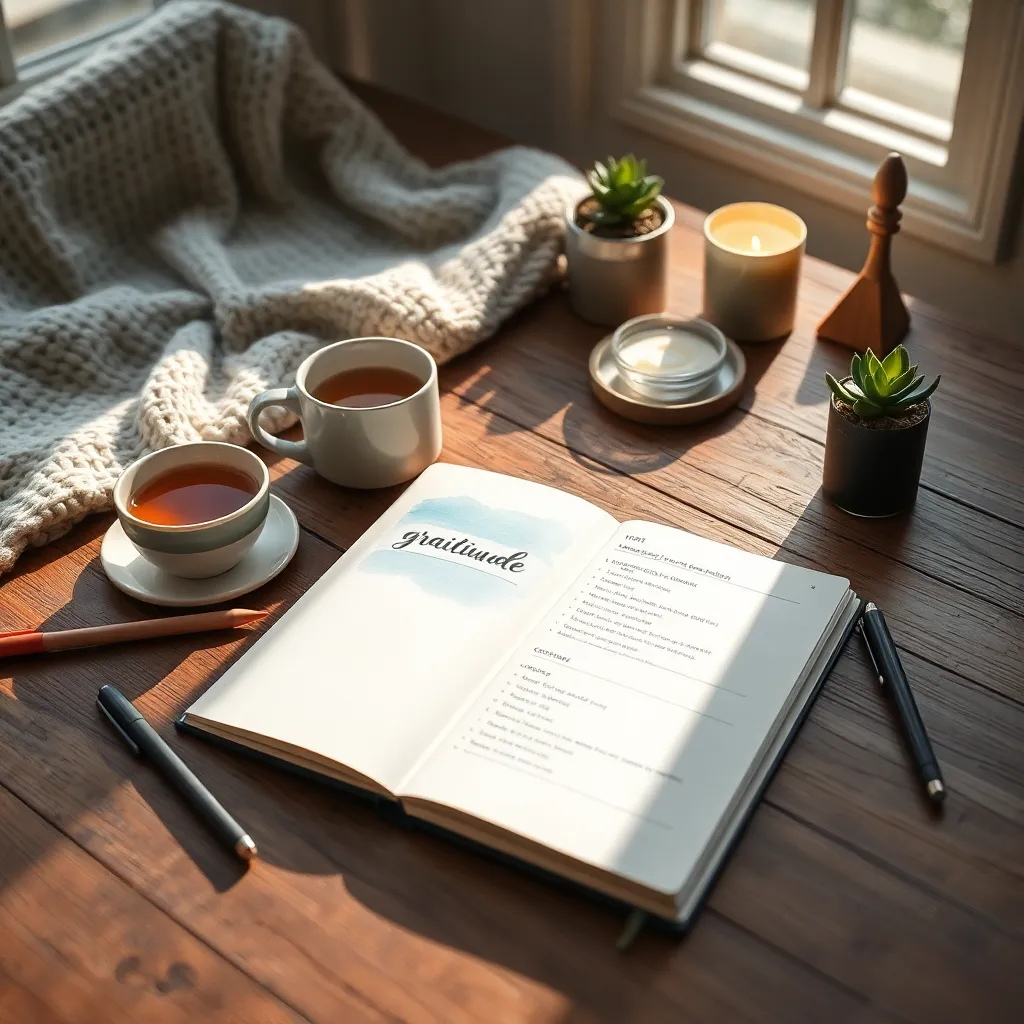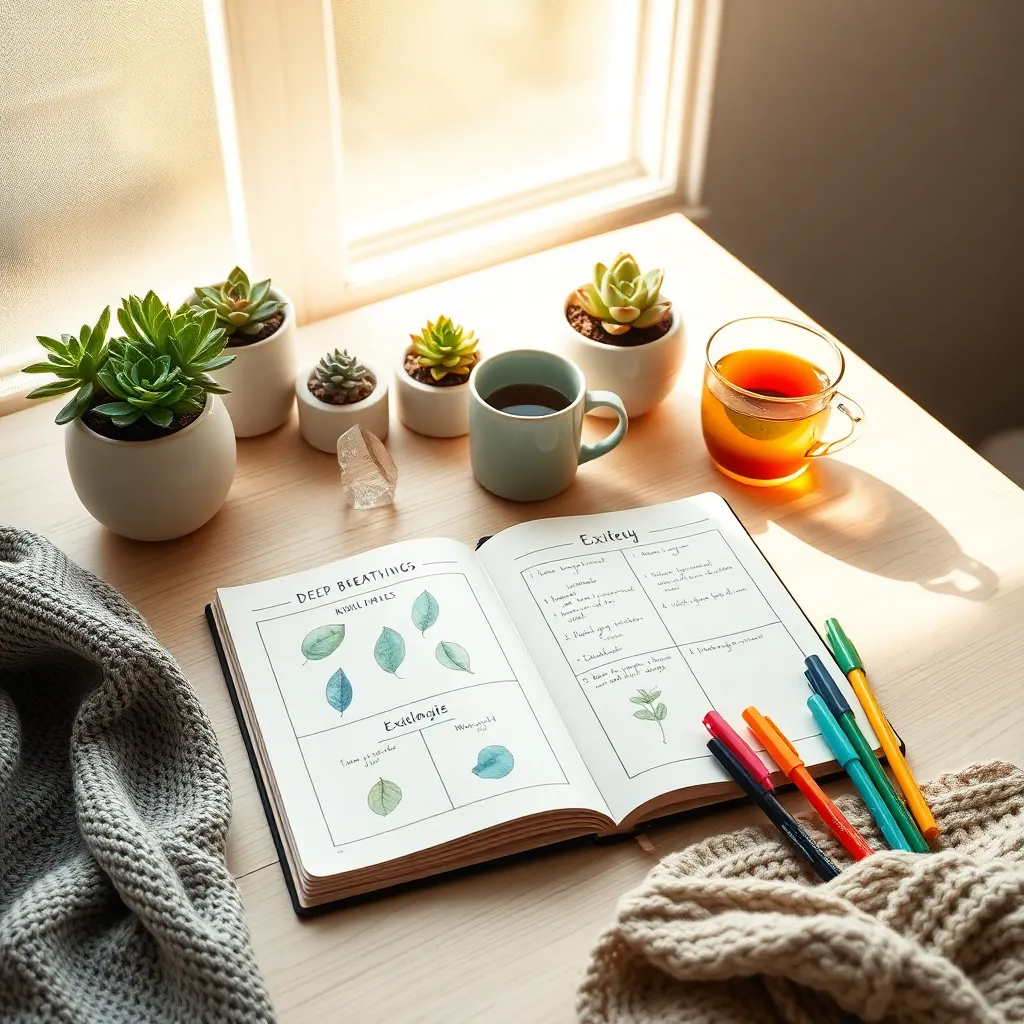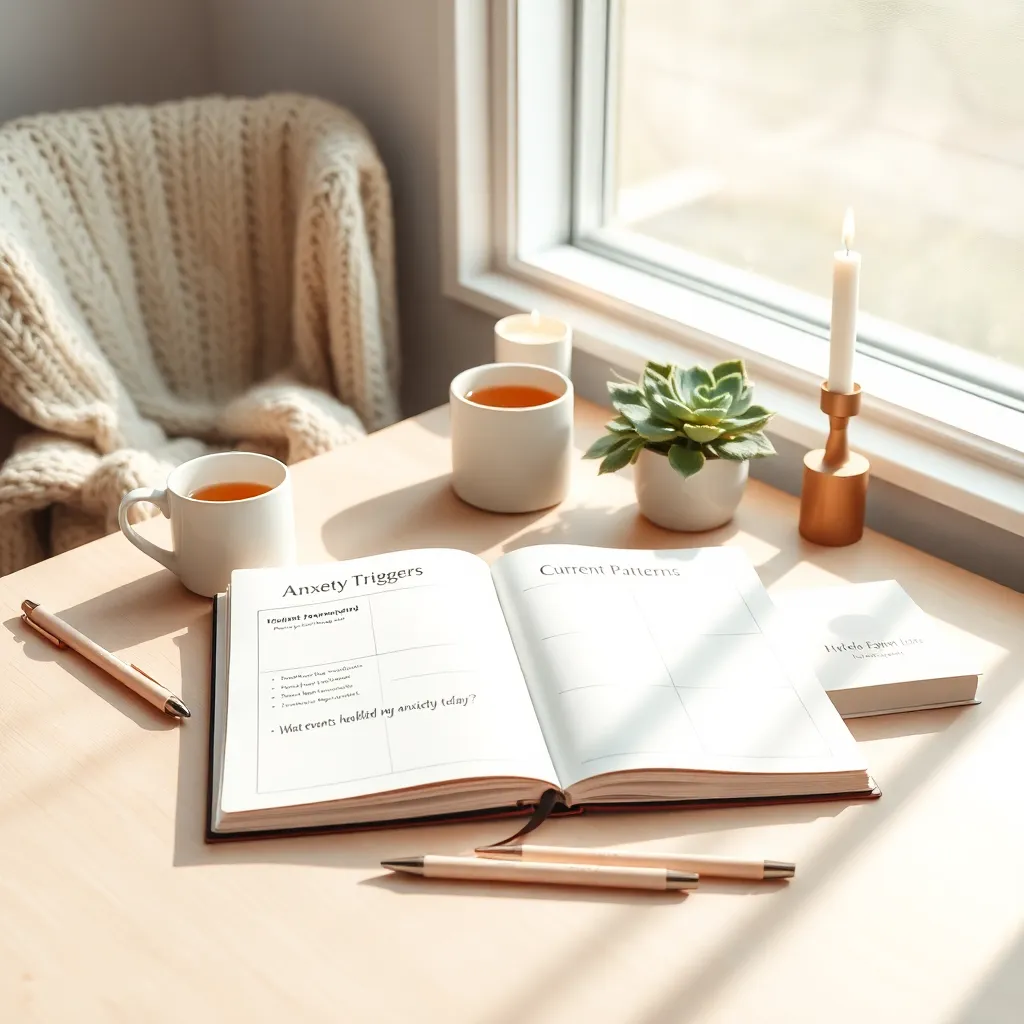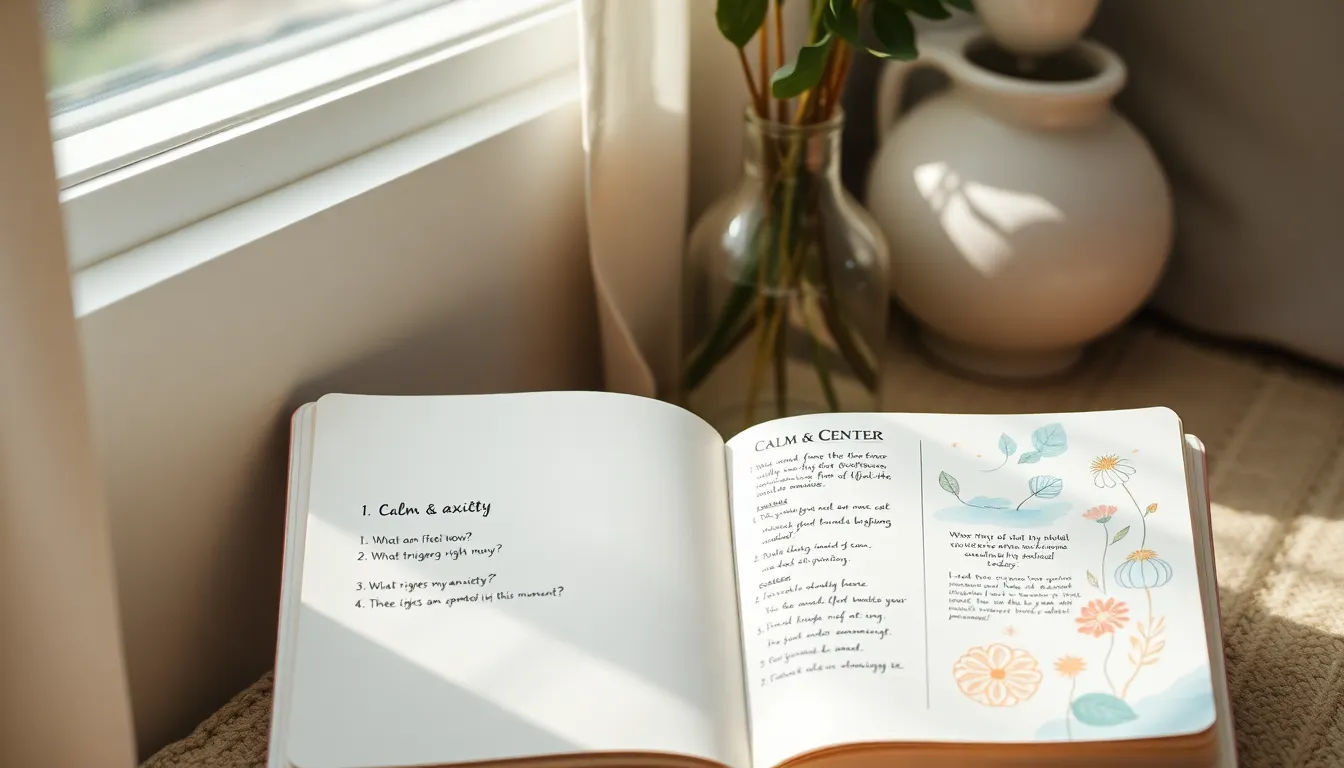In today’s fast-paced world, anxiety can feel overwhelming. Journaling offers a safe space to untangle thoughts and find peace, making it a vital tool for mental wellness.
Unlock techniques that transform stress into calm and clarity. Embrace these practices to nurture a more serene mind and heart.
Start with Daily Gratitude Entries

Begin each day by noting down what you’re grateful for. This practice shifts focus from anxiety to positivity, fostering a calm mindset. Keep it simple with three short entries daily.
Consider prompts like:
- What made me smile today?
- Who am I thankful to have in my life?
These guide reflections, grounding you in the present and easing anxious thoughts.
Write Down Anxious Thoughts

Capture your anxious thoughts by writing them down without judgment. This practice helps to release tension and gain clarity.
Use prompts like:
- “What triggered my anxiety today?”
- “How do I feel right now?”
These encourage reflection and understanding, providing a sense of calm.
Incorporate Deep Breathing Exercises

Integrate deep breathing into your journaling by starting each session with a few calming breaths. Focus on inhaling deeply through your nose and exhaling slowly through your mouth. This helps center your thoughts and creates a calm space for writing.
Enhance your practice with reflective prompts like:
- “What sensations do I notice in my body right now?”
- “How does deep breathing shift my mood today?”
Let these insights guide your journaling and ease anxiety.
Use Positive Affirmation Prompts

Embrace the power of positive affirmations to shift your mindset. Start your journaling session by writing a simple affirmation like “I am calm and capable” or “I trust myself.” Repeat these as you write to internalize positivity.
Incorporate prompts to deepen your practice. Ask yourself:
- What positive qualities do I embody?
- How can I nurture self-compassion today?
Use these to guide your thoughts and reduce anxiety.
Track Anxiety Triggers and Patterns

Identify anxiety triggers by noting moments of stress. Jot down thoughts and feelings when anxiety arises to spot patterns.
Use prompts like:
- “What events triggered my anxiety today?”
- “How did I respond, and what helped me feel better?”
Reflect regularly to develop self-awareness and calming strategies.
Conclusion: Creating Beautiful Outdoor Spaces
In navigating the intricate dance of relationships, understanding and calming anxiety is paramount. This article has explored five key journaling techniques to help you achieve this: identifying triggers, practicing gratitude, setting intentions, reflecting on positive interactions, and visualizing ideal outcomes. Each method serves as a stepping stone toward fostering a more serene and understanding connection with your partner.
As a next step, take a moment today to set aside ten minutes to begin your journey with a gratitude journal. Reflect on the positive aspects of your relationship and how they make you feel. This small, consistent practice can gradually shift your mindset from anxiety to appreciation.
Remember, growth in relationships is a continuous journey. Save this article as a handy reference to revisit these techniques whenever you need a gentle reminder or fresh inspiration. Simply bookmarking this page can serve as your personal guide to maintaining calm and fostering deeper connections.
By embracing these journaling techniques, you’re not only soothing anxiety but also paving the way for a future where your relationships thrive on understanding, love, and resilience. Empower yourself to take these steps, and watch as your relational world transforms with peace and positivity.

